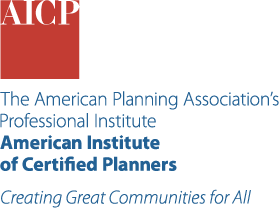Uncovering JAPA
Planning is Not Project Management

Planners are not rubber-stampers, box-checkers, or red-tape Byzantines. In the collaborative process of placemaking, planners, developers, and politicians all dance with elements of space and time.
Planning logic competes with and combines with that of business and politics. The disconnects and power differences between roles interrupt and influence planners' dreams and operating logic.
In "Planning, Property, and Political Logics of Development Compared" (Journal of the American Planning Association, Vol. 91, No. 1), Nicholas A. Phelps constructs an analytical framework for understanding the interdependent yet distinct logics of different roles affecting planning processes. Working between disciplines, Phelps seeks to demonstrate the value of integrating insights from outside the planning field.
Understanding Planning, Development, and Political Interests
Urban planners, property developers, and politicians shape the built environment according to their interests in the creation and maintenance of a sense of place. They are all bound by time and the rhythms of plan-making, but each operates with different lenses of logic.
Planners have a logic that is spatial and idealistic when aiming for the successful spatial arrangement of activities and land uses. Developers are more temporal. They are realistically interested in the timing of development and are hinged on the rhythms of business, property, and macroeconomic cycles, such as interest rates.
The author identifies politicians as being equally disposed toward space and time, though doubly opportunistic in their relationship to both elements. When and where affordable housing or entertainment districts are built can be valuable political capital.
At the other end of the spectrum, where NIMBYism prevails, politicians seek to minimize the loss of votes by influencing where locally unwanted land uses are sited. The spatial arrangement and sequencing of development and its timing are themselves fungible sources of capital for politicians.

Figure 1: Mixes of planning, property, and politics in development.
The Push and Pull of Development
Planning and development are intimately linked. Development processes are shaped by planning regulations, whereas planning cannot help but adjust to development practices and processes. Developers' sensitivity to time leads them to push the development process.
Planners' decisions may mirror the interest of developers in timing and become little more than project management of review and permitting. Other times, planners' interest in the timing of development is communicated in the desire for its spatial sequencing. The development process itself can be seen as a set of time-linked decision chains.
Political Uncertainty
Politics can have strong consequences on urban planning, often revealing deeper structures of class conflict. Political instability and uncertainty can impede the planning process, with most forms of uncertainty being external to the planning system and out of the hands of practicing planners.
The majority share of uncertainty affecting planning comes from the politicized nature of the decisions, not from uncertainty in planning forecasts or in the environment (including property development cycles).
Phelps warns against the common reality of approaching planning as project management, making it clear that this approach can miss out on longer-term and more holistic approaches to place-making.
The role of a planner in shaping places is also that of a guardian of the public interest. The author encourages urban planning education to integrate logic, creativity, negotiation, and entrepreneurship to equip graduates to enter the planning practice.
Key TAKEAWAYS
- Resist reducing urban planning to mere project management
- Uphold planners' roles as guardians of public interest
- Planning education should include logic, negotiation, creativity, and entrepreneurship skills
Top image: Photo by iStock/Getty Images Plus
ABOUT THE AUTHOR


